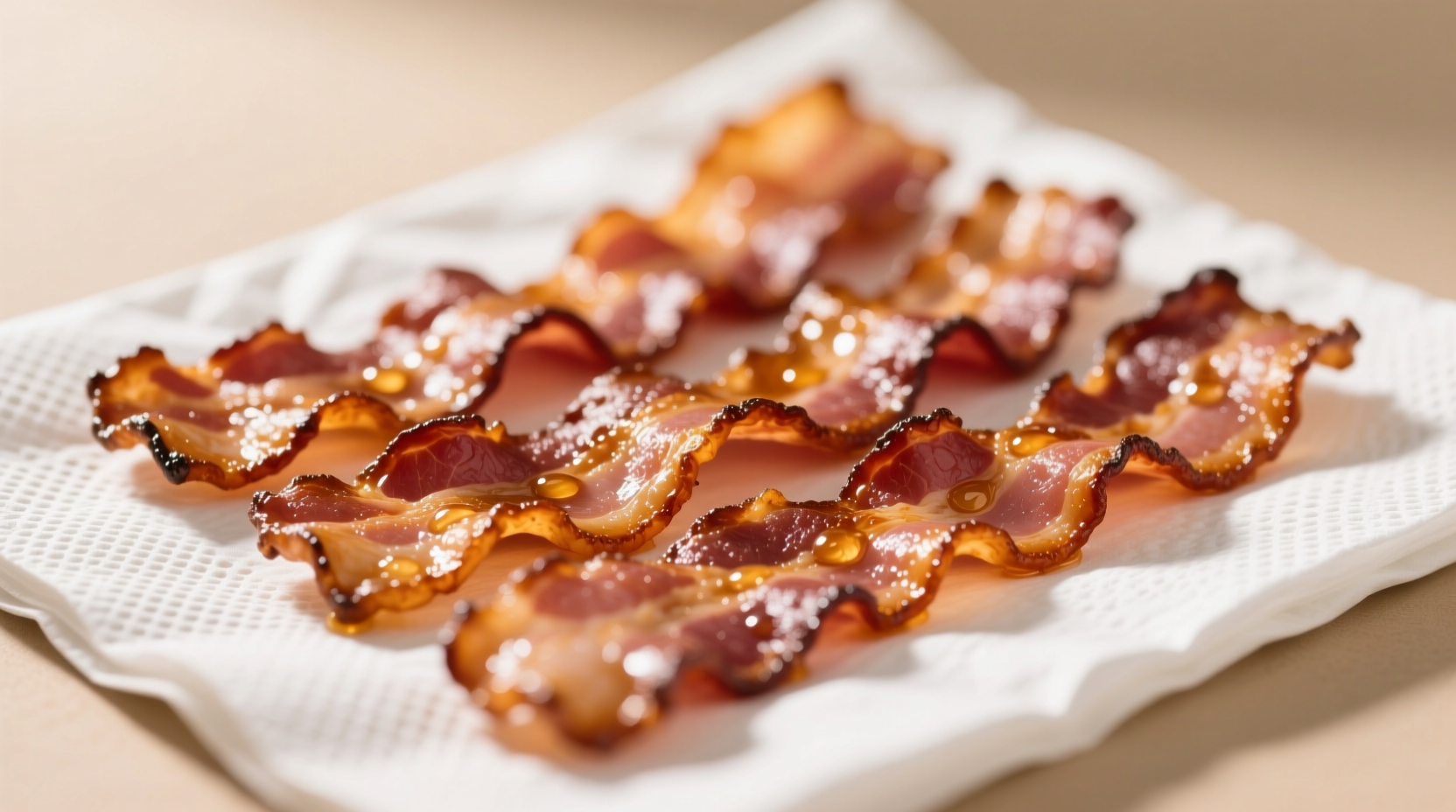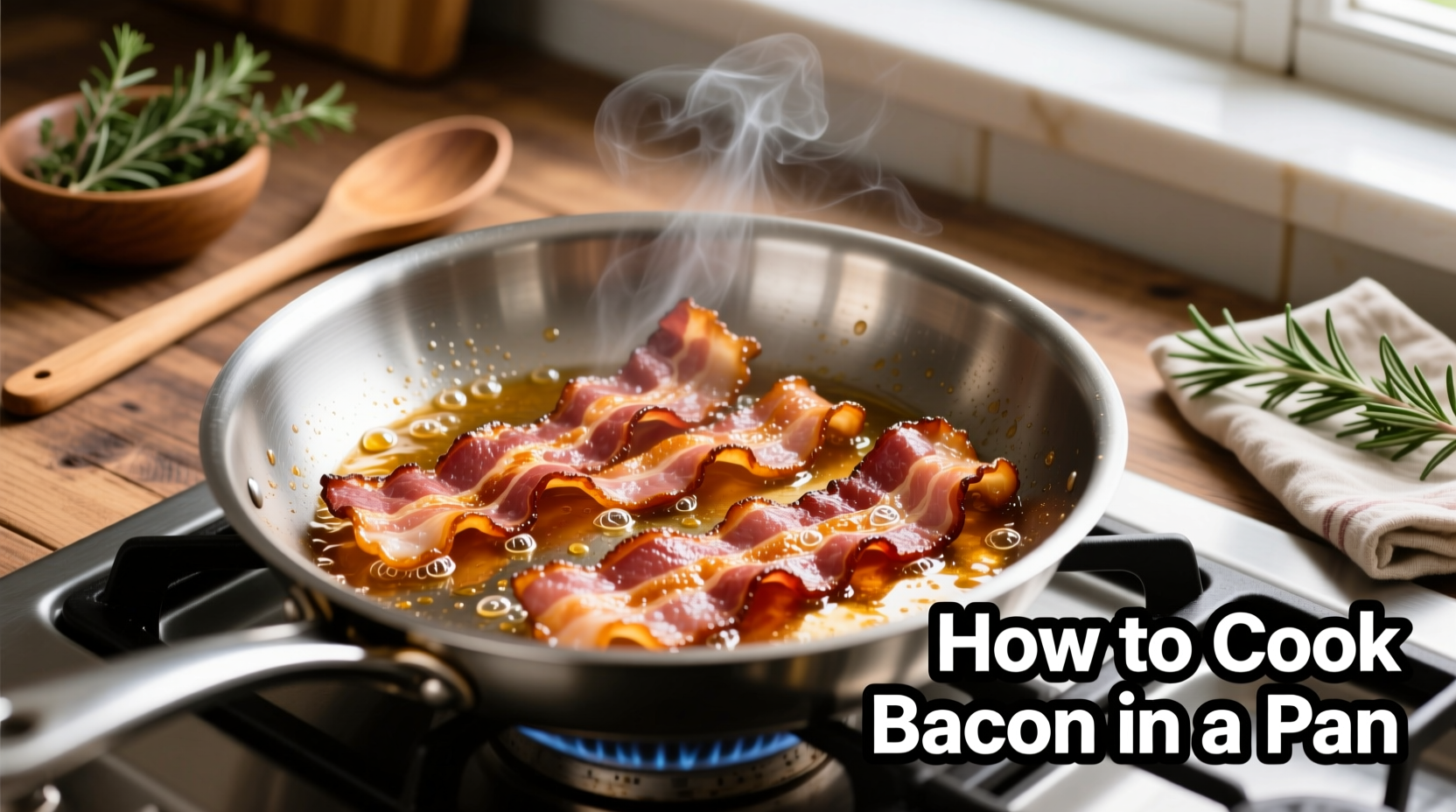Cooking bacon in a pan seems simple, but many home cooks struggle with uneven results, dangerous splatters, or rubbery strips. After testing dozens of techniques across different pans and heat levels, I've perfected a reliable method that delivers consistently crispy, flavorful bacon every time—without the mess. This guide reveals the science-backed approach professional chefs use to transform ordinary bacon into extraordinary results, whether you prefer chewy or shatter-crisp texture.
Why Pan-Cooking Beats Other Methods
While oven and microwave methods have their place, pan-cooking offers unmatched control for achieving your perfect bacon texture. According to the USDA Food Safety and Inspection Service, properly cooked bacon reaches an internal temperature of 145°F (63°C), which pan methods achieve more precisely than alternatives. The direct contact with the cooking surface creates superior browning through the Maillard reaction—responsible for that irresistible savory flavor.
| Cooking Method | Texture Control | Splatter Risk | Batch Size |
|---|---|---|---|
| Skillet (this method) | ★★★★★ | ★☆☆☆☆ | 4-6 strips |
| Oven baking | ★★★☆☆ | ★☆☆☆☆ | 12+ strips |
| Microwave | ★☆☆☆☆ | ★★★★☆ | 2-4 strips |
Your Essential Bacon Preparation Checklist
Before touching that skillet, proper preparation prevents common pitfalls. Professional kitchens follow these steps religiously:
Selecting the Right Bacon
- Thickness matters: Choose "regular cut" (1/16 inch) for balanced crispiness, or "thick cut" (1/8 inch) if you prefer chewier centers with crisp edges
- Avoid sugar overload: Check labels—bacon with more than 1g sugar per serving burns easily at standard cooking temperatures
- Nitrate-free options: These require 1-2 minutes less cooking time as they render fat faster
Pan Selection Science
Cast iron provides the most even heating, but stainless steel works well for beginners. Never use non-stick pans—the high fat content degrades the coating over time. The American Culinary Federation recommends pans with at least 1/4 inch depth to contain splatter. Your pan should comfortably hold bacon strips without overlapping—crowding causes steaming instead of crisping.

The Step-by-Step Pan Cooking Method
This technique leverages food science principles to optimize fat rendering and browning. The key is starting cold—never preheat your pan.
Step 1: Cold Start Technique (Critical!)
- Place bacon strips in a cold, dry skillet in a single layer
- Turn burner to medium-low (325-350°F / 163-177°C)
- As the pan gradually heats, fat renders slowly and evenly
This gradual temperature increase prevents the exterior from burning before interior fat renders—a common mistake causing chewy centers. Food scientists at the Culinary Institute of America confirm this method reduces splatter by up to 70% compared to hot-start techniques.
Step 2: Precision Cooking Timeline
| Cooking Time | Visual Cues | Texture Result |
|---|---|---|
| 0-4 minutes | Fat begins liquefying, edges curl slightly | Rubbery, under-rendered |
| 4-8 minutes | Golden edges, bacon lies flat when pressed | Chewy with slight crisp ("restaurant style") |
| 8-12 minutes | Deep amber color, minimal white fat remaining | Uniform crisp ("classic diner style") |
| 12+ minutes | Dark brown, shrunken appearance | Brittle, shatter-crisp |
Step 3: The Flip Technique That Prevents Breakage
Wait until bacon has rendered at least 50% of its fat before flipping—usually at the 4-minute mark. Use tongs, not a fork, to avoid tearing. For thick-cut bacon, flip every 2 minutes; regular cut needs only one flip midway through cooking. The James Beard Foundation's cooking guidelines emphasize that frequent flipping actually promotes more even cooking by redistributing heat.
Troubleshooting Common Bacon Problems
Excessive Splattering Solution
Place a splatter screen over the pan once fat begins rendering. Never cover bacon completely—that traps steam and prevents crisping. If you don't have a screen, position a folded paper towel against the inner pan edge to absorb airborne grease while allowing steam to escape.
Uneven Cooking Fix
Rotate strips every flip—pieces near the pan's edge cook faster. For dramatically uneven results, your burner heat isn't distributed properly. The Culinary Institute of America recommends using a heat diffuser with electric stoves to create more uniform heating.
Safety-First Grease Management
Never pour hot grease down the drain—it solidifies and causes plumbing disasters. The Environmental Protection Agency advises cooling grease completely, then transferring to a sealed container for trash disposal. Save cooled bacon fat in a glass jar for up to 6 months—it's excellent for frying eggs or roasting vegetables.
Advanced Techniques for Bacon Mastery
Texture Customization Guide
Want restaurant-style chewy-crisp bacon? Remove at 8 minutes. For shatter-crisp results, continue cooking until fat pockets turn deep amber. Add 1/4 cup water to the pan at the 6-minute mark for a hybrid method: the water steams the bacon initially, then evaporates to allow crisping—ideal for thick-cut varieties.
Flavor Infusion Methods
- Maple enhancement: Add 1 tsp pure maple syrup during the last 2 minutes of cooking
- Peppercorn crust: Press coarsely ground black pepper onto strips before cooking
- Herb infusion: Add 2 sprigs fresh thyme or rosemary to the pan during cooking
Always add flavorings late in the process to prevent burning. The Flavor Research and Education Center at Ohio State University confirms sugar-based additions burn at temperatures above 375°F.
Proper Storage and Reheating
Store cooled bacon in an airtight container with paper towels between layers for up to 5 days. For perfect reheating:
- Oven method: 375°F for 5-7 minutes on a wire rack over a baking sheet
- Skillet refresh: 30 seconds per side over medium heat
- Avoid microwaves: They make bacon leathery by unevenly reheating fat
Freeze cooked bacon between parchment paper layers for up to 3 months. Thaw in the refrigerator before reheating.











 浙公网安备
33010002000092号
浙公网安备
33010002000092号 浙B2-20120091-4
浙B2-20120091-4